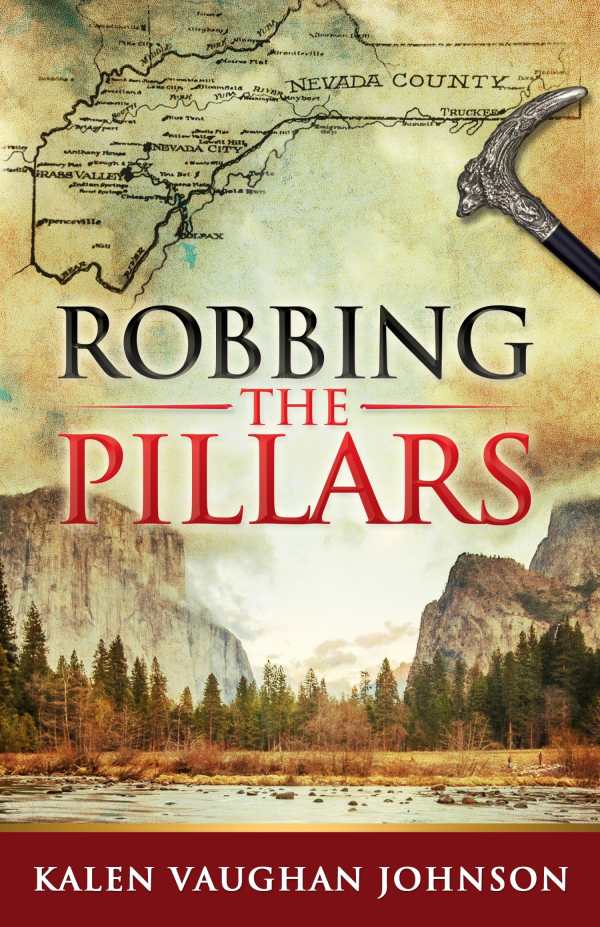Robbing the Pillars
Colorful historical settings and insights into immigrant experiences result in a meaningful, satisfying story.
A colorful saga of the wild days of the California gold rush, Robbing the Pillars by Kalen Vaughan Johnson chronicles Scottish immigrant James MacLaren’s rise from a fugitive to a leading citizen, as well as central California’s struggle to shed its lawless ways for the mantle of civilized respectability.
Fleeing his native Scotland after an accidental killing, MacLaren finds opportunities in mid-nineteenth-century Nevada City, California—along with love, tragedy, and, inevitably, politics.
This well-researched historical novel paints a broad, vivid portrait of life in the Sierra Nevada foothills. It’s packed with period details of everything from mining to dressmaking to breaking horses. Rich settings include camps in the wilderness gold fields, the salons of the privileged, and the saloons of the working class.
Robbing the Pillars uses its characters to draw a contrast between the working and privileged classes of the time. MacLaren, a working-class archetype, is physically imposing, with many progressive principles. Young Dutton Dandridge is handsome, eloquent, and savvy, and he is set up as the leader of the wealthy class. The conflict never quite takes off, however. While the story pays some attention to Dandridge’s activities—which are mostly conspiracy-like meetings with other wealthy characters—it is mainly concerned with MacLaren’s rise to prosperity through foresight and hard work.
That rise, while interesting for its details, such as hydro-blasting for gold, is not as dramatic as it might be; it mostly involves MacLaren making correct decisions that lead to successful outcomes, without surprise obstacles or setbacks.
Conflict and drama do rear their heads in the form of fires and floods; such catastrophic events regularly ravage Nevada City and nearby communities. The action is compelling, and the aftermaths are dramatic as characters struggle with repair and prevention.
Characters, including MacLaren and Dandridge, are sharply rendered. Physical descriptions are detailed, and realistic dialogue—including MacLaren’s Scottish brogue—advances the plot, allowing characters to tell their own stories.
An active narrative voice and strong writing move the story along. Action generally wraps up with neat stopping points at the end of chapters, which slows the excitement. Still, colorful historical settings and insights into period immigrant and establishment perspectives result in a meaningful, satisfying story.
This chronicle of the relentless progress of a frontier community makes for compelling reading, providing a fascinating look at a unique place and time in the nation’s history.
Reviewed by
Gary Henry
Disclosure: This article is not an endorsement, but a review. The publisher of this book provided free copies of the book and paid a small fee to have their book reviewed by a professional reviewer. Foreword Reviews and Clarion Reviews make no guarantee that the publisher will receive a positive review. Foreword Magazine, Inc. is disclosing this in accordance with the Federal Trade Commission’s 16 CFR, Part 255.

